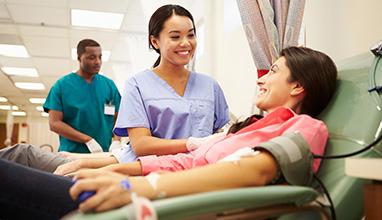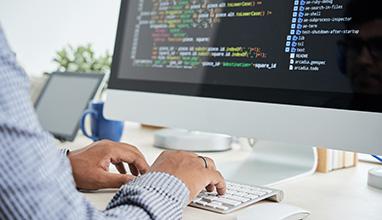A phlebotomist is an individual who works with patients to collect samples of blood per a doctor’s orders. As a phlebotomist, you will be directly involved with patients and will need a specific set of skills in order to enjoy your job and be successful in the long run.
Bedside Manner
Since your primary role as a phlebotomist will be drawing blood from patients so that it can be analyzed in the laboratory, you will need to work with patients directly. Some patients may feel apprehensive about having their blood drawn; still others may simply be perturbed due to their illness or the situation, particularly if they have been waiting in an ER lobby or are on a tight schedule. It is easier to draw blood from patients when they are relaxed, so your good bedside manner is a necessary skill. Using soft words, reassuring the patients and making the procedure as fast and simple as possible will all go a long way toward making the patient comfortable.
Consistency
A phlebotomist often works in the same facility day after day performing the same tasks, and as a result, the job can become repetitive. If you are not detail-oriented and consistent in your work, you run the risk of becoming bored and making mistakes in preparation, needle placement or even hygiene—any of these can be detrimental to the health of the patient and your career. To avoid these mistakes, you should work to develop a consistent routine that applies to your blood draws. This way, the chances of making a mistake are reduced and your patients will enjoy a better level of care overall.
Good Hygiene
While everyone in a healthcare needs to maintain a certain level of hygiene in order to protect themselves and their patients, when needles and the handling of blood are introduced, this becomes even more important. There are plenty of risks associated with improper hygiene; you run the risk of contracting diseases like HIV or hepatitis and your patients run the risk of developing infections at the draw site. As such, you will need to be incredibly conscientious about the cleanliness of the needles, syringes, your hands, the area surrounding the draw site, and anything else that may come into contact with either yourself or the patient.
Technical Skills
Finally, in order to be able to perform your job, you will need to have certain technical skills. These include being able to locate a suitable vein, the ability to reach the vein in a single needle stick to prevent patient discomfort, and manual dexterity to aid in patient comfort as well as the wielding of the syringe. You will need the expertise to find an alternate draw site if the standard site—the forearm—is not suitable for any reason. You will also need organizational skills so that you can document when you have drawn blood for a patient and properly label the collected specimens.
While your responsibilities as a phlebotomist may be limited to collecting blood, you will still play a very important role in the care of your patients. Your attitude and technical ability will go a long way toward helping you to become successful and allowing you to enjoy a successful career.






